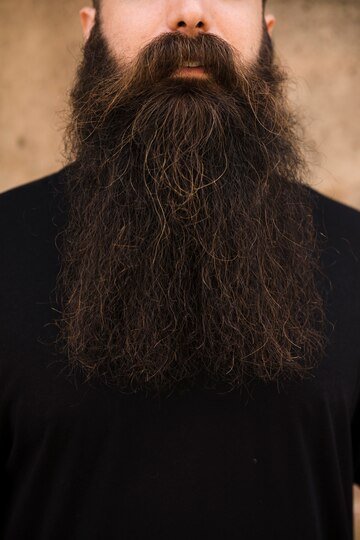Dealing with a rough, scratchy beard? You’re not alone. Many men struggle with coarse facial hair, but you don’t need to shave it off. Whether you want a softer beard for yourself or for a loved one, I’ve got you covered. In this guide, I’ll delve into the common causes of rough and dry beards and provide you with easy, actionable tips to transform your beard into a softer, more comfortable texture. From understanding the impact of environmental factors and grooming habits to learning about the best products and techniques for beard care, this comprehensive guide will help you achieve the healthy, soft beard you desire. Learn how to maintain the best-looking and feeling beard by reading on.
Table of Contents
Toggle
What Causes Your Beard to Be Rough or Dry?
There could be various reasons why your beard feels rough or dry. Understanding these causes can help you take steps to improve your beard’s texture and health.
Exposure to Elements
Your beard is exposed to sun, wind, and cold weather, which can make it dry and brittle. Over time, older beard hairs become rough because they face these harsh conditions for longer periods.
Improper Cleaning
If you do not properly clean your beard, food particles, dust, and oils will accumulate. Your beard may feel dry after using regular soap or shampoo since they remove natural oils from it.
Wrong Products
Using products with alcohol or silicones can dry out your beard. It’s essential to choose the right beard products that nourish and moisturize your facial hair.
Excessive Heat
Using blow dryers or roughly towel-drying your beard can damage it, making it more prone to dryness and brittleness.
Lack of Moisture
If you don’t moisturize your beard regularly, it can become dry. Proper hydration and using beard oils or conditioners can help keep your beard soft.
Poor Grooming Habits
Dryness can be caused by over-washing your beard or forgetting to cut split ends. Regular grooming and trimming can help maintain your beard’s health.
Environmental Factors
Low temperatures and exposure to hard water can negatively affect your beard. Your beard may feel knotted and harsh due to a residue left behind by hard water.
Dehydration
Dehydration from consuming insufficient amounts of water might impact your skin and facial hair. Staying hydrated is essential for keeping a healthy beard.
Split Ends
Using dull or dirty trimming tools can cause split ends, making your beard feel rough. Ensuring your trimming tools are clean and sharp can help prevent this.
Poor Diet
A diet lacking essential vitamins and hydration can also leave your beard feeling rough. Eating a balanced diet rich in vitamins can promote healthier beard growth.
By addressing these factors, you can improve the texture and overall health of your beard, making it softer and more manageable.
How Can You Soften Your Beard?
Softening your beard can be easy with a good routine and the right products. Here are a few easy tips to help you maintain a healthy, smooth beard.
Properly Follow a Beard Washing Routine
First, wash your beard two to three times a week with an alcohol- and sulfate-free beard-friendly shampoo. While retaining the natural oils in the skin, this helps remove debris, filth, and dead skin cells. For added hydration and softness, use a beard conditioner after washing. Avoid over-washing to prevent dryness.
Nourish with Beard Oil
Apply beard oil daily to soften your beard. Choose oils with natural ingredients like jojoba, argan, or almond. Apply a few drops to your beard and massage them into the skin after washing and drying it. This helps replenish natural oils, hydrate, and soften the hair, reducing itchiness and adding shine.
Comb and Brush Your Beard Gently
Use a quality beard brush or wide-tooth comb to keep your beard neat and soft. Brushing helps to equally distribute natural oils and products, remove knots, and train the hair to grow in the right direction. Opt for boar-bristle brushes or wooden combs instead of plastic ones. Regular combing and brushing also stimulate the skin and follicles, enhancing overall beard health.
Trim and Shape Regularly
Regular trimming helps keep your beard soft and healthy by removing split ends. Trim around once every six to eight weeks. Start by combing your beard to identify any split ends or stray hairs, then use sharp scissors or a quality beard trimmer for precise cuts. Trimming also helps maintain your beard’s shape and appearance, making it look neat and well-groomed. For optimal results, think about going to a professional barber.
Style with Beard Balm
Use beard balm to style and soften your beard. Along with nourishing and preserving your beard, it offers a gentle grip that makes it easier to style. Apply a small amount to a slightly damp beard, working it in from the roots to the tips. Beard balm contains nourishing ingredients like shea butter and essential oils, which help keep your beard healthy, thick, and soft. For best results, distribute it evenly using a comb or brush.
Maintain a Healthy Diet
A healthy diet contributes to a softer beard. Eat foods rich in biotin, such as eggs, nuts, and salmon, to promote beard growth and health. Stay hydrated by drinking plenty of water, which helps keep your beard soft and shiny.
Use Quality Beard Products
Choose high-quality beard care products with natural ingredients. Avoid products with harsh chemicals that can dry out your beard and skin. Investing in good products can make a significant difference in the texture and health of your beard.
Avoid Touching Your Beard
Make an effort to avoid touching your beard too much since this might cause it to get oily and unclean from your hands. Use your hands only when applying beard oil or balm.
By following these simple steps, you can keep your beard soft, healthy, and well-groomed. Take pleasure in keeping your beard looking fantastic and enjoy your grooming routine.



